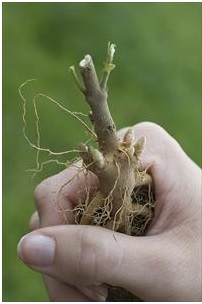Shop by Category
Shop by Brand
Shop by Brand
Amsonia
Effortless Elegance for Every Garden
Embrace the understated elegance of Amsonia, commonly known as Blue Star. This versatile perennial captivates with its clusters of delicate, star-shaped, blue flowers that bloom in late spring, adding a cool and calming touch to any garden. Its feathery foliage provides a beautiful backdrop for other blooms and turns a vibrant golden yellow in the fall, extending its seasonal interest. Amsonia is a low-maintenance, adaptable plant, perfect for borders, meadows, woodland gardens, and even containers.
- Exquisite Blue Flowers: Clusters of delicate, star-shaped, blue flowers create a soothing and captivating display.
- Long-Lasting Blooms: Enjoy weeks of color in late spring and early summer.
- Attractive Foliage: Feathery, willow-like foliage provides a soft texture and a beautiful backdrop for other plants.
- Stunning Fall Color: Foliage transforms into a vibrant golden yellow in autumn, extending seasonal interest.
- Adaptable: Thrives in a variety of conditions, from full sun to partial shade.
- Low Maintenance: Requires minimal care once established.
- Deer Resistant: Generally unappealing to deer and other browsing animals.
Optimal Conditions:
- Soil: Prefers moist, well-drained soil but tolerates a range of soil types.
- Sunlight: Full sun to partial shade. In hot climates, afternoon shade is beneficial.
- Hardiness: Varies depending on the species. Most Amsonia are hardy in USDA zones 3-9.
- Spacing: Space plants 2-3 feet apart to allow for their mature size.
- Planting Depth: Plant at the same depth as the container it came in.
- Watering at planting: Water thoroughly after planting and until established.
Care Tips:
- Watering: Water regularly during the first growing season to establish a strong root system. Once established, Amsonia is relatively drought-tolerant.
- Fertilizing: Generally, does not require fertilization. A light application of balanced fertilizer in spring can be beneficial.
- Pruning: Can be pruned back after flowering to maintain a compact shape or left to grow naturally for a more relaxed appearance.
- Dividing: Divide established clumps every 3-4 years in spring or fall to rejuvenate plants.
Companion Planting Ideas:
- Combine with other sun-loving perennials like Echinacea, Salvia, and Coreopsis.
- Plant alongside ornamental grasses for textural contrast.
- Create a meadow-like effect with a mix of Amsonia varieties and wildflowers.
- Use in borders to add vertical interest and pops of color.
- Pair with spring-blooming bulbs like tulips and daffodils.
Key Features Summary:
- Delicate, star-shaped, blue flowers.
- Attractive, feathery foliage.
- Stunning fall color.
- Adaptable and low maintenance.
- Deer resistant.

Amsonia (am-soh-nee-uh), Blue Stars; Dogbane Family (Apocynaceae). Amsonia have small funnel-shaped flowers. Easily grown in average, medium, well-drained soil in full sun to part shade. Best fall foliage color usually occurs in full sun. Flowers generally last longer if given some afternoon shade in hot sun areas, however, stems may open up and flop with too much shade, however. Consider cutting back the stems by about 6 inches after flowering to help keep stems upright and to shape plants into a nice foliage mound.
This easy care, heat and humidity tolerant, deer resistant perennial is an excellent choice for gardeners looking for low maintenance or native perennials.
Attributes: Deer Resistant, Rabbit Resistant. Borders, rock gardens, native plant garden, cottage garden or open woodland area. Best when massed.
